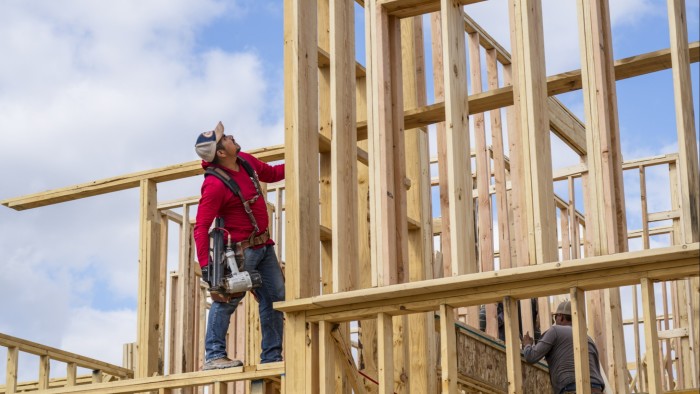Keep knowledgeable with free updates
Merely signal as much as the US financial system myFT Digest — delivered on to your inbox.
Residential building within the US dropped to a five-year low in Might, as homebuilders grappled with risky tariffs on imported supplies, stubbornly excessive mortgage charges and extra inventories of unsold models.
Housing begins fell 9.8 per cent month over month to a seasonally adjusted annual charge of just about 1.26mn houses in Might, in accordance with information launched by the Census Bureau on Wednesday. It was the bottom studying for the reason that Covid-19 pandemic stalled building initiatives in 2020, and under the just about 1.36mn begins economists anticipated.
Permits for brand new building additionally dropped greater than anticipated to an annualised charge of 1.38mn models in Might, the bottom since June 2020.
The comfortable information got here simply hours earlier than the US central financial institution was on account of situation its newest interest-rate choice on Wednesday afternoon and as President Donald Trump heaped additional criticism on Federal Reserve chair Jay Powell for not reducing rates of interest.
Economists mentioned building was being weighed down by the volatility of Trump’s trade war, which is predicted to boost prices on essential constructing supplies. The US president has repeatedly threatened sweeping tariffs on buying and selling companions, usually earlier than later pulling again.
“Homebuilders are placing a pause on new constructions in mild of continued tariff uncertainty and the problem they face in pricing new initiatives because of this,” mentioned Selma Hepp, chief economist at property guide Cotality.
The subdued building figures come after a survey by the Nationwide Affiliation of House Builders and Wells Fargo, launched on Tuesday, discovered that homebuilder sentiment had sunk to the bottom stage since 2022.
Builders reported that they have been more and more below stress to slash costs and spend extra on incentive packages — resembling design credit and rate of interest buydowns — to be able to offload inventory in a static market.
“Margins are being compressed,” mentioned Ali Wolf, chief economist at building information firm Zonda. “If builders wish to compete they now have to supply quite a lot of concessions.”
Wolf added that financial uncertainty amongst shoppers was additionally weighing on the development market. “Homebuilders must know that they might promote a house to be able to construct a house [but] there’s quite a lot of doubt proper now.”
These indicators of weak point within the housing market come because the Fed prepares to announce its newest choice on rates of interest. The central financial institution is broadly anticipated to maintain borrowing prices regular, however buyers can be watching carefully for any adjustments in policymakers’ forecasts, and for any dovish indicators from Powell throughout his press convention.
“Mortgage charges at present ranges are inflicting the housing sector to contract and costs to fall,” mentioned Andrew Hollenhorst, chief US economist at Citi. “That’s one clear indication that the rates of interest stay restrictive and can must be diminished.”
The speed on a 30-year mortgage eased to six.84 per cent within the week ending June 13 from 6.93 per cent seven days earlier, in accordance with information on Wednesday from the Mortgage Bankers Affiliation. Charges hit a 23-year excessive of just about 8 per cent in 2023 and haven’t been under 6 per cent since September 2022.
















